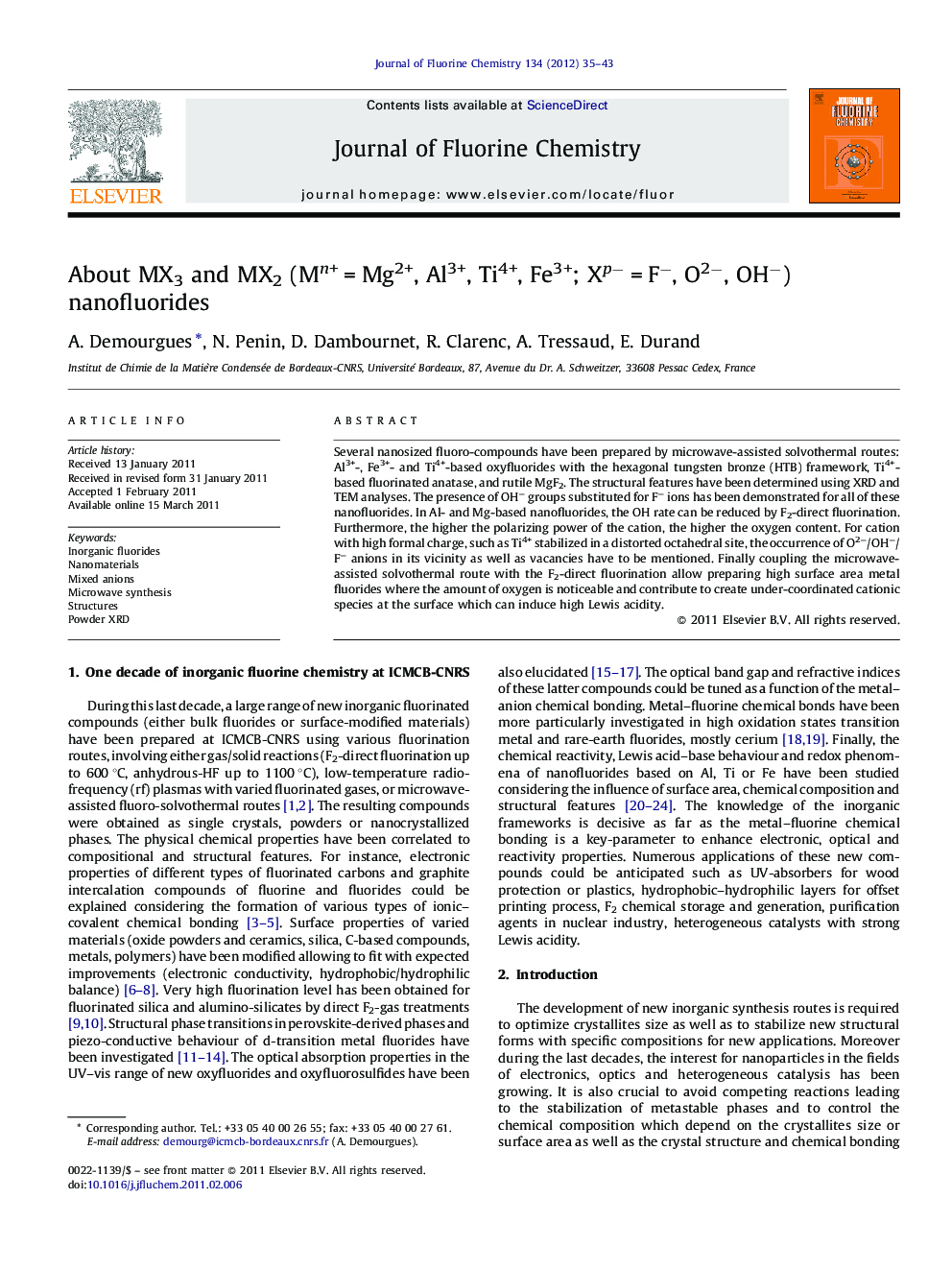| Article ID | Journal | Published Year | Pages | File Type |
|---|---|---|---|---|
| 1314087 | Journal of Fluorine Chemistry | 2012 | 9 Pages |
Several nanosized fluoro-compounds have been prepared by microwave-assisted solvothermal routes: Al3+-, Fe3+- and Ti4+-based oxyfluorides with the hexagonal tungsten bronze (HTB) framework, Ti4+-based fluorinated anatase, and rutile MgF2. The structural features have been determined using XRD and TEM analyses. The presence of OH− groups substituted for F− ions has been demonstrated for all of these nanofluorides. In Al- and Mg-based nanofluorides, the OH rate can be reduced by F2-direct fluorination. Furthermore, the higher the polarizing power of the cation, the higher the oxygen content. For cation with high formal charge, such as Ti4+ stabilized in a distorted octahedral site, the occurrence of O2−/OH−/F− anions in its vicinity as well as vacancies have to be mentioned. Finally coupling the microwave-assisted solvothermal route with the F2-direct fluorination allow preparing high surface area metal fluorides where the amount of oxygen is noticeable and contribute to create under-coordinated cationic species at the surface which can induce high Lewis acidity.
Graphical abstractMg, Al, Ti and Fe-based nanofluorides with high surface area, containing mixed anions (F−, O2−, OH−) and adopting HTB, anatase and rutile frameworks have been prepared by solvothermal routes and the structures have been determined.Figure optionsDownload full-size imageDownload as PowerPoint slideResearch highlights► Mg, Al, Fe and Ti-based fluoro-compounds exhibit high surface areas. ► Solvothermal synthesis and F2-direct fluorination have been performed. ► These compounds adopt HTB, anatase or rutile-type structure. ► Oxygen and hydroxyls are partially substituted for fluorine.
